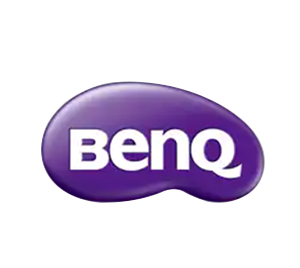All your Digital Marketing solutions in one place.
We craft stunning digital experiences tailored to your brand’s needs, all with trust, transparency & values.
Explore NowWe craft stunning digital experiences tailored to your brand’s needs, all with trust, transparency & values.
Explore Now

Let’s generate your brand’s affinity through innovative social media strategies and campaigns.
Explore Now
Maximise your products’ presence to millions of people on Amazon through the right enhancements, optimisations & campaigns.
Explore Now

Start growing your Organic Search presence with an affordable and quick SEO setup and executions from day one.
Explore Now

How amazing will it be to find the solution of all your digital marketing problems at one place? Ranging from search engine optimization of small websites to bulky advertising campaigns, we cover everything digital. Our in-house team has a broad array of experts to cater every individual project and problem with dedication.
Know MoreIncrease your brand love through the most-advanced SEO services. We serve E-commerce, Enterprise-level companies and Startup businesses.
Explore MoreGet the best qualified traction, leads and conversions through Google Ads. We manage all - Search, Display, Gmail, YouTube and Shopping campaigns.
Explore MoreWe have many successful stories on generating brand affinity & lead generation through Social media platforms - Facebook, Instagram, LinkedIn and Twitter.
Explore MoreGet ready to uplift your brand impressions and sales to the next level by allowing us to assist you in managing your brand store and Amazon marketing campaigns.
Explore MoreWith proven ASO techniques, we help App startups and companies to increase their app downloads & get found organically on App Stores - Google Play and Apple App store. .
Explore MoreWe craft stunning digital experiences through developing SEO-friendly websites for our customers. Get more information here.
Explore More
We have been working with DigiVigyan for a while now. Our experience with the firm was worth writing a testimonial for Amit. The firm comes up with the appropriate measures and suggestions that have helped our digital campaigns to get the desired results. We wish Amit and Team good luck.

COO – MapmyIndia
Amit and his team have done a commendable job for our international websites. Digivigyan helped us with SEO and digital marketing consultation, which further improved our customer reach and online conversion rates significantly. Their cooperation and expertise differentiates them from their competitors.

Product Manager | International Markets - OYO Rooms
Cooperate with them in E-commerce operation including Amazon & Flipkart, digital marketing, social media management and etc. They provide reliable and transparent service that help much in India market. Lots of appreciation to DigiVigyan team.

BenQ Materials Corporation Taiwan
Rarely do you come across a standout talent like Amit and an agency like DigiVigyan. Their meticulous planning coupled with the tenacity and focus towards achieving goals is truly commendable. The team is full of over-achievers yet grounded and approachable. The team earns my highest respect and recommendation.

Director | Nu Republic
DigiVigyan really came through to optimize our digital performance in every sphere. They started with SEO optimization and brought our content to the first page for high performing keywords. They also built a fast, lean new website for us with big improvements on the backend. We have been able to scale our outreach with their analytical insights and implementation.

All About Eve
The quality of the campaign run by Amit and his team has been nothing short of amazing. It has yielded not just a good volume of leads, rather a very high quality of leads. Furthermore, the response time on changes, tweaks and queries has never been more than a call away.

Head of Marketing - Whitecaps Culinary Education Pvt. Ltd.
We worked with DigiVigyan in 2018 and part of 2019 and found their team to be sincere and hard working. I’ve known Amit since a while and his venture seeks out to be the next big thing in build brands by taking the SEO route. Amit has been an amazing extended team member to have for support and wears the brand thinking hat on to deliver success to his clients.

Magic Software Inc.
The discovery of DigiVigyan & Amit was by chance few months back. Today, they are the partner for us for 3 brands. The efficacy, proficiency and core competency they bring to the table is par excellence. The same has been reciprocated by the brand & digital marketing custodians of our clients. We hope to strengthen our relationship to a newer, greater heights in the days to come.

Managing Director | M&C Saatchi February
We have been working with DigiVigyan for more than a year now. However our relationship with Amit has been for about 5 years. Amit had been a dependable and dedicated partner for us along these years and has helped us solve many problems related to our brand management and customer acquisition. Our organization has greatly benefited from DigiVigyan team's hardwork and smart work. I would definitely recommend DigiVigyan to anyone seeking digital marketing partner.

Chief Growth Officer, Isobar
I am always impressed with the service and pro-activeness that DigiVigyan shows us. The best part is, they won't do just like we say but will also give suggestions on how to do that job in a better way. Keep up the good work guys !!

Business Catalyst - AAJ Enterprises
The name itself justifies the work, which they are doing! Their knowledge, expertise and skills are the key factors for the successful delivery. Thank you very much for the superb service strengthening on our various projects. We appreciate the efforts taken in delivering the assignments.

CliniExperts Services Pvt. Ltd